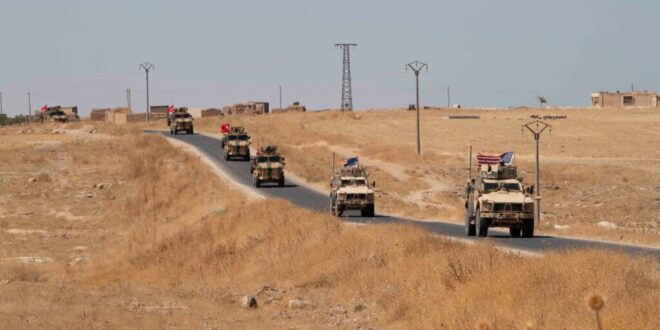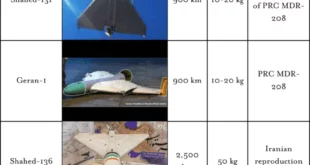In July, Turkish President Recep Tayyip Erdoğan said he would be open to hosting Syrian President Bashar al-Assad for a visit to Turkey. Normalization will not come easily or soon, but Erdoğan’s push for rapprochement is in itself remarkable. Given the intensity of Turkey’s commitment a decade ago to overthrowing Assad and ushering in a new era in the Middle East, this moment marks an end to an extraordinarily tumultuous period in Turkish history.
The Arab Spring and its consequences, particularly in Syria, were inseparable from the catastrophe that engulfed Turkey in the 2010s. In this crucial period, Turkey was both a protagonist and a victim of the chaos that swept the region. First as prime minister and then as president, Erdoğan and his inner circle embraced the opportunity to transform the region through revolution, both as a validation of their ideology of the liberation of oppressed Muslims, and as a means to help them defeat their opponents within Turkey. The revolutions abroad failed, but Erdoğan succeeded in consolidating a new authoritarian system at home amidst a wave of violence and political turmoil.
Reflecting on the damage that the Syrian civil war did to Turkish democracy and the U.S.-Turkish alliance helps illuminate the cardinal sin of America’s policy in the Middle East during this period. Put simply, Washington tried to be involved without being too involved.
Traumatized by the invasion and occupation of Iraq, the Obama administration’s first principle was to keep the region at arms’ length, even though the United States was already in up to its elbows. Washington supported the Arab Spring, including the Syrian revolution, but only up to a point, for fear of what democracy might bring. After the Islamic State in Iraq and the Levant emerged, the United States built a partnership with Kurds in northern Syria to defeat it, even as Washington supported Turkey’s ongoing bombing campaigns against those same Kurds in Iraq, and insisted nothing had changed in the U.S.-Turkish relationship. From roughly 2014 on, success was measured purely in terms of defeating the Islamic State. And in this regard U.S. policy performed well. But when the consequences for Turkey and the U.S.-Turkish relationship are taken into account, the assessment looks much less favorable.
What’s past is past, and there is no way to play out a counterfactual U.S. policy for that period. Going forward, policymakers should recognize the degree of change inside Turkey since 2011 and remain vigilant for the opportunities that could appear as Turkey emerges from a disastrous decade. The presidential elections in 2023 and municipal elections in 2024 showed that there is a deep demand for different policies and different leadership in Turkey. Rather than looking for a grand reset through new modes of trade or security cooperation, U.S. policy should invest in the smaller-bore but essential work that builds and sustains ties across Turkish society in anticipation of the post-Erdoğan era that will eventually come.
Turkey’s Cataclysm, 2013–2017
Amidst the violence that engulfed the region, it is easy to forget just how much turmoil Turkey experienced. All of what follows happened in Turkey during the five years from 2013 to 2017. In May 2013, protests against developing a park in downtown Istanbul went nationwide, bringing millions of citizens onto the streets. What activists called the “Gezi uprising” was followed by a crackdown on protesters, civil society groups, and journalists that helped secure government dominance over the nation’s media and civil society.
Shortly after the Gezi protests, Erdoğan and his erstwhile ally, the Gülen movement, finally split. An Islamic order following the preacher Fethullah Gülen, the movement controlled business interests and social institutions across Turkish society, and its members were active within the judiciary, police, and military. With these resources, the Gulen movement helped the Justice and Development Party as it fought to wrest the state from a secularist old guard suspicious of the party’s Islamist roots. Gülen and the Justice and Development Party had been grappling behind the scenes for roughly two years, but the feud came to a head in December 2013. That’s when Gülen-linked prosecutors arrested multiple government ministers and leaked tapes revealing high-level corruption, including some involving Erdoğan. In response to the leaks, the state blocked Twitter for the first time in spring 2014 and began a witch hunt for Gülenists in the prosecutorial service and judiciary, as well as civil society and the media.
In the face of this opposition, Erdoğan managed to consolidate power. In 2014, he successfully castled from the prime minister’s office to the presidency through elections, the first step in his stated intention to convert Turkey from a parliamentary to a super-presidential system. Yet despite Erdoğan’s claims, this did not bring stability to the country.
In 2015, peace talks between the government and the Kurdistan Workers’ Party collapsed. The Justice and Development Party then lost its parliamentary majority for the first time since 2002, after the pro-Kurdish Peoples’ Democratic Party entered parliament. Erdoğan insisted on re-running elections rather than allowing the opposition to attempt to form a government. Meanwhile, the Islamic State began conducting a series of armed attacks and suicide bombings inside Turkey, killing hundreds of Peoples’ Democratic Party supporters in what seemed to be an effort to further polarize Turkish society. It was during this period that the violence in Syria — where the Syrian branch of the same Kurdish movement to which the Peoples’ Democratic Party belonged was engaged in a desperate fight against the Islamic State — began to boomerang back into Turkey.
Accusing the government of facilitating Islamic State attacks, Kurdish militants killed two Turkish policemen in July 2015. In response, Erdoğan restarted the war with the Kurdistan Workers’ Party in the southeast, killing hundreds of civilians as well as thousands of militants and Turkish soldiers. The Kurdish movement declared autonomy in several locations, hoping to replicate its success across the border in Syria. The Turkish army responded with a counter-insurgency campaign that levelled parts of several predominantly Kurdish cities, displacing hundreds of thousands of people. Widespread dissent against the war prompted a crackdown on journalists and academics; thousands were charged, and many of those joined a new wave of exiles leaving the country. The Kurdistan Workers’ Party launched its own campaign of suicide bombings across the country. At the same time, the Islamic State continued to escalate its attacks with a rampage at Istanbul’s Ataturk Airport in June 2016.
But worse was to come. On July 15, 2016, a coup attempt led by a mix of Gülenists and non-Gülenist military officers failed, but not before leaving more than 250 people dead across the country. A state of emergency was imposed, and the coup attempt was used to justify a crackdown against anyone suspected of being Gülenist. Hundreds of thousands of people were arrested, fired from government jobs, and blacklisted for housing and employment, virtually all of them without any demonstrated connection to the coup attempt itself. Thousands of others who had nothing to do with the movement or the coup attempt were also swept up.
Eventually, the state formally folded all the events of these years — Gezi, the war with the Kurdistan Workers’ Party, the Gülen movement, foreign think tanks and George Soros, even the Islamic State — into one giant conspiracy theory. This conspiracy was then elaborated in prosecutions, speeches, and the headlines of government media organs. It served to justify the jailing of civil society leader Osman Kavala and Peoples’ Democratic Party leaders Selahattin Demirtaş and Figen Yüksekdağ as well as countless others who remain behind bars today. Whole sectors of civil society and media were either taken over by the government or shuttered.
In the end, Erdoğan got his presidential system. In 2017, he won a constitutional referendum by the slimmest of margins. The vote was held under a state of emergency and was accompanied by an infamous last-minute change to vote verification procedures on the afternoon of the ballot.
The Role of the Arab Spring in the Cataclysm
If this series of events is relatively well known to anyone who has followed Turkish politics, the degree of entanglement with the conflict in Syria has not always been appreciated — though a notable exception is Gönül Tol’s recent Erdoğan’s War.
When the Arab Spring began in 2011, Ankara initially hesitated, and then threw its weight into full-throated support for rebellions across the Arab Middle East. While not a Muslim Brotherhood party itself, the Justice and Development Party’s sympathies were strongly with the Brotherhood factions that came to power in Tunisia and Egypt and that formed leading elements in the early days of the Syrian and Libyan revolutions. With Ahmet Davutoğlu as foreign minister at the time, Turkish foreign policy was premised on the idea that the world would experience a civilizational reordering and the upending of the Western-dominated order that Turkey’s leaders blamed for regional oppression. In Turkey’s neighborhood, this would be led by conservative Muslim parties that represented the common man, unlike the secular elites that had allegedly dominated the region. As the Middle East’s only ruling party meeting that definition at the time, the Justice and Development Party in particular would play a leading role in this Islamic political revival.
The Arab Spring seemed to validate Davutoğlu’s weltanschauung. His view of the revolt was based on a certain messianic reading of Turkey’s role in the region, particularly an idealization of the Ottoman era that paradoxically expanded upon more conventionally republican Turkish nationalism. It required flattening the Arab Spring itself into a narrative of oppressed Muslims rising against their illegitimate rulers — a narrative true as a gloss, but deeply simplistic, and ultimately poorly suited for navigating what was to come.
The Arab Spring paralleled and helped drive Turkey’s cataclysm. For the part of Turkey that embraced it, Gezi is still remembered as an organic uprising against a government that was clearly growing less tolerant of dissent and difference. For Erdoğan, it was part of the backlash against the conservative Islamic revolt that he considered the Arab Spring to be. By the time of Gezi’s peak, in June 2013, Muslim Brotherhood President Mohamed Morsi in Egypt was already on the ropes. Mass protests, supported behind the scenes by the Egyptian military and interior ministry, were calling for his resignation, culminating in a coup the following month. In hindsight, it is clear that Erdoğan saw Gezi as preparation for a coup against him, like the one in Egypt. For years after the Egyptian coup, the four-fingered Rabaa sign was a feature of Erdoğan’s rallies. His embrace of the Rabaa martyrs was a counterpoint to Gezi’s claim to be a popular uprising.
The next major event in Turkey’s cataclysm, the civil war that resumed in 2015, was closely bound up with events in Syria. By that time, Syria’s revolution had long since degenerated into brutal violence. Along the border between Turkey and Syria, the Kurdistan Workers’ Party’s Syrian branch, the People’s Protection Units, emerged from underground to seize its own territory. In early 2015, the People’s Protection Units managed to hold off the Islamic State in a desperate battle at the border city of Kobane. The United States, desperate for a way to defeat the Islamic State, began to collaborate with the People’s Protection Units. The United States airdropped supplies to Kurdish fighters in Kobane and conducted airstrikes on Islamic State forces, even as Turkey refrained from taking any action.
For Ankara, the People’s Protection Units’ consolidation of territorial control of a stretch along the border, marked by its victory at Kobane, was a catastrophe. The group’s cooperation with the United States was even worse. When Erdoğan rejected his own government’s peace process in spring 2015, he was drawing a line in the sand against the Peoples’ Democratic Party, which had also come out strongly against his proposed presidential system. At the same time, Erdoğan was also building an alliance with Turkish nationalists and hardliners within the security services who had long been opposed to the peace process and alarmed by Kurdish strength in Syria.
At the same time, the Islamic State’s attacks were also forcing a reckoning. The common charge at the time that “Turkey backed the Islamic State” was always exaggerated. But in 2014 and 2015, when the Islamic State targeted Turkey’s Kurdish movement, Ankara at best showed little interest in intervening, and at worst may have been complicit. It was only as Islamic State attacks expanded and Ankara gradually sealed the border and cracked down on the group that the full extent of the blowback Turkey faced became clear.
What Came After
Through the crucible of these years, a very different Erdoğan, and a very different Turkey, emerged. For all its simplifications, its crude majoritarianism, and its self-serving results, Ankara’s commitment in the early years of the Arab Spring must have come from a genuine belief that a better world would be made through the revolutions. Without that sincerity, Turkey’s policies are illegible.
After the cataclysm, on the other hand, Erdoğan emerged an elder statesman of the most cynical and hardened type. Relations with Moscow are perhaps the most telling. As late as the end of 2015, Turkey and Russia were at dire cross-purposes in Syria, so much so that Turkey shot down a Russian fighter jet along the border. But Russia’s successful intervention on Assad’s behalf ultimately doomed the revolution, and eventually Ankara not only acquiesced to Russia’s role in Syria — and, with it, Assad’s survival — but sought out cooperation with Russia on a range of issues as its split with the United States over the People’s Protection Units deepened. The 2016 coup attempt, Moscow’s support, and Ankara’s paranoid conviction that there was a Western hand in the plot all combined to build a new Turkish-Russian relationship. The new dispensation survived even serious clashes, like a Russian airstrike that killed dozens of Turkish soldiers inside Syria in 2020.
In the end, narrow interests like suppressing the Kurdish movement, securing Turkey’s borders, and staying in power won out. Despite his rhetorical bluster about fighting for the rights of oppressed Muslims, Erdoğan’s foreign policy now focuses on a diminished set of ambitions closely bound up with his own self-preservation. In domestic policy, Erdoğan no longer makes any pretense of running from a broad liberal-right center as he did in his first decade. Since the formative early months of 2015, he has been in coalition with the far-right Nationalist Action Party, and has embraced the most important parts of its platform: hardline Turkish nationalism and intolerance for what that tradition considers deviant social elements.
The U.S. Role
Seeing how the Syrian civil war helped destroy Turkish democracy and the U.S.-Turkish alliance is a valuable lesson in the perils of thinking the United States can escape the Middle East, whether by adopting a policy of greater restraint or by pivoting away from it to focus on China. At least since the Obama administration, there has been a consistent desire to be rid of the Middle East as a policy problem — to untie it like a shoelace with one deft tug or, better yet, to excise it like a tumor and leave it in the operating room. The dream remains today, even as Israel’s war in Gaza approaches its second year and risks spreading into an even wider conflict.
Because of this approach, Washington responded to the Syrian civil war with a half-hearted and contradictory set of policies that in the end found full-throated agreement on only one objective — destroying the Islamic State. The United States does not bear the blame for what happened in Turkey between 2013 and 2017, but U.S. policies in Syria were undertaken with little concern for what the larger implications would be, including in Turkey. Turkey’s cataclysm offers a corrective for anyone who thinks they can compartmentalize U.S. foreign policy along national or thematic lines.
Working with the People’s Protection Units against the Islamic State did not just worsen the U.S.-Turkish relationship, which was already tense in the best of times. It shattered the last pillar on which the relationship stood. It fueled the popular conspiracy theory that the United States was bent on dismembering the Turkish republic and deepened internal conflict within Turkey. The alternative would have been to commit more U.S. forces to the fight against the Islamic State or, at the very least, complement the anti–Islamic State partnership with the People’s Protection Units with an equally committed effort to make peace between the Kurdistan Workers’ Party and the Turkish state. Reckoning with the broader dynamics that connected Syria’s war to Turkey’s could have helped avoid, or at least mitigate, disaster.
Moving forward, Washington cannot undo the damage done, but it can be more thoughtful in preparing for the future. There is strong reason to believe Erdoğan’s longed-for transformation of the country toward a more conservative social order has failed. As the dust has settled after the catastrophic years of the mid-2010s, the economic and social consequences of his rule have severely damaged his own and his party’s popularity. Even though Erdoğan will remain president at least until 2028, both political and social opposition to his mode of rule are widespread and deeply rooted in Turkey.
Like a forest growing back after a fire, different social and political formations are emerging in Turkey after the cataclysm. These may ultimately help the country move toward the restoration of rule of law, the protection of civil rights, and the embrace of the country’s inherent pluralism. There is a strong U.S. interest in Turkey developing a system of government that provides better and more inclusive governance. Moving in that direction given the current dynamic will require avoiding knee-jerk responses to provocations from Ankara, sustaining ties with a range of political and social actors in Turkey through democracy assistance and other programs, and investing in exchanges, fellowships, and research by both Turkish and American scholars and professionals. All of these are conventional but effective building blocks for developing and retaining interest and expertise on Turkey and in U.S.-Turkish relations. Washington should resist grabbing at the brass ring of a grand “reset” through new forms of trade or security cooperation, and focus on getting the small things right before moving to larger goals. In this way, Washington can be supportive of, but also patient toward, the possibility that Turkey’s catastrophic recent past will not be its future.
 Eurasia Press & News
Eurasia Press & News



